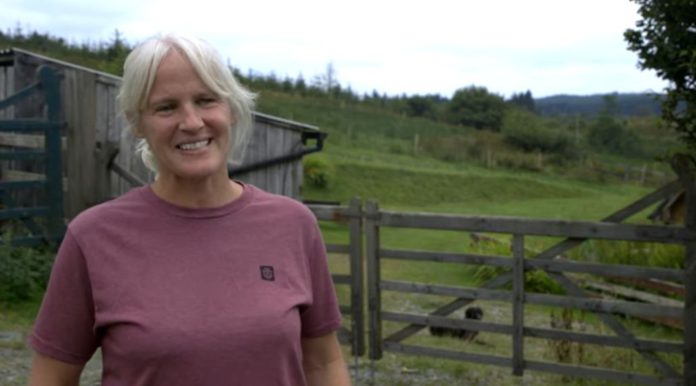Nia O’Malley took the reins of her family farm, spanning 60 hectares in the Slieve Aughty Mountains, Co Galway, eleven years ago.
Since then, she has worked to rebuild and regenerate the enterprise with respect for the natural landscape and wildlife.
The hill farmer manages a small herd of Belted Galloway cattle along with some ponies and donkeys across 38 hectares.
Her grandfather purchased the farm in the 1970s as part of his “retirement plan” before Nia’s mother began farming with him, where she remained for twenty-five years.
Nia explained: “The farm was idle for about ten years, and then I moved in. I have been restoring it to what it was for the past ten years.”
“It has been a slow process. It has been incredible and mind-blowing to see how quickly it had gone back to wild and scrub in those ten years.”
“Donkeys have played a huge role in that, being light on the ground and eating everything – scrub and rushes – before them. The last couple of years, I have taken on a few cows and am growing the herd by adding a few more each year.”
Hen Harrier programme
Farming in a hen harrier Special Protected Area, Nia joined the Hen Harrier programme in 2018, where she was involved in a mountain grazing project.
The trial focused on increasing cattle grazing on areas of bog/heath that are dominated by Molinia grasses and pose serious fire risks.
She worked closely with agriculture specialist, Eoin McCarthy, and purchased cull cows for the trial.
“We are trying to encourage farmers to mountain graze so that the Molinia grass can be grazed off. It gives a better opportunity for the heather to be more established and, in turn, creates a nice habitat.”
“The Molinia grasses present a major fire risk. When the grass dies down in the winter, it starts to become very yellow and straw-like.”
The amount of Molinia in the trial area was reduced greatly, and cows were in “great condition”.
‘The farm is working with you’
As part of her efforts to regenerate the soil, the suckler-beef farmer has planted hedgerows and areas of native woodland.
“You are working with the farm; the farm is working with you, but you are not trying to change the farm into something it is not. It is never going to be an intensive farm.”
“Once you step back from that thinking and appreciate it for what it is, that is the bigger picture.”
“Something you learn as a hill farmer is you have to adapt to the area. You cannot just come in and change things as you wish.”
“You have to adapt to the land and work with the land, rather than forcing the land to adapt to your farming practices,” the Slieve Aughty Mountains farmer added.
Farming for Nature
Nia is one of the ambassadors of the 2021 national Farming for Nature initiative.
Now in its fourth year, FFN aims to “source, share and celebrate the stories of farmers across Ireland who manage their land in a way that sustains nature while providing a livelihood for their families”.
The seven ambassadors will feature at the annual Burren Winterage Weekend in October. Organisers will announce the winner of the public vote at this event.
Watch a video of this Slieve Aughty Mountains farmer:
To share your story, email – [email protected]





